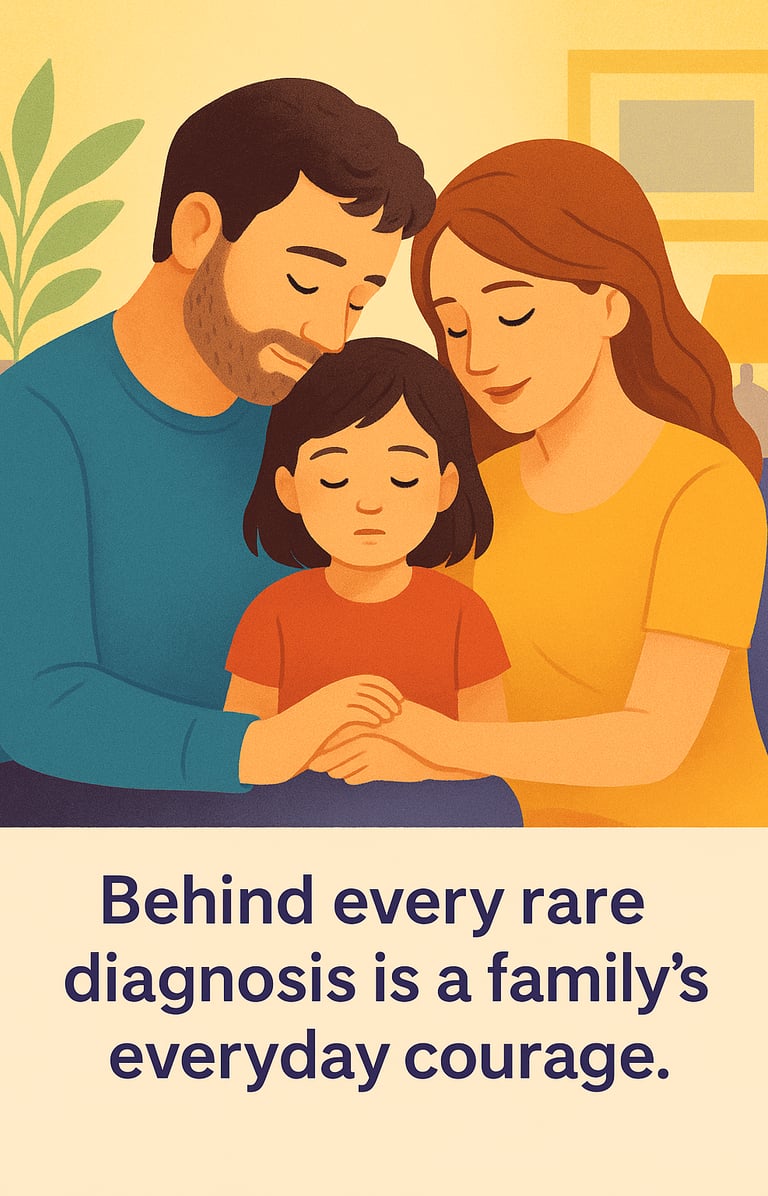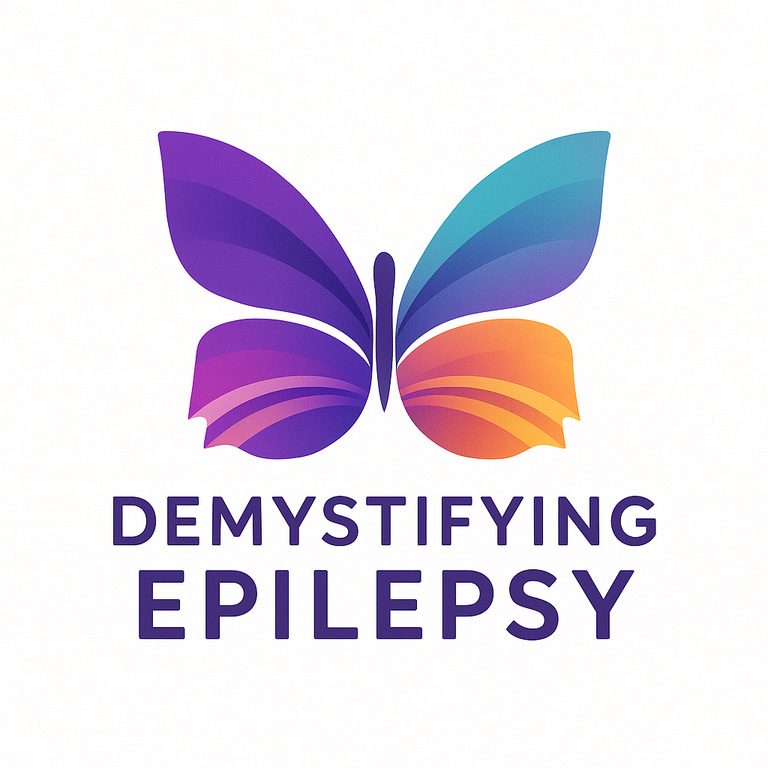Understanding Dravet Syndrome
Dravet syndrome is a rare, severe form of epilepsy that begins in infancy and impacts many aspects of life beyond seizures. This post explores the latest understanding of Dravet syndrome including its causes, symptoms, diagnosis, and advances in treatment options. It also highlights how families and healthcare teams can work together to improve quality of life, manage complications, and access emerging therapies and support resources.
Dr. Clotilda Chinyanya
11/17/20255 min read


Tom’s Story: When Seizures Aren’t Just “Bad Days”
Tom was an active 9-month-old baby who loved splashing during bath time. One evening, after the water had warmed up just a little more than usual, he suddenly began twitching and jerking on the left side of his body. His parents rushed him to the hospital, where he experienced a prolonged tonic-clonic seizure that lasted nearly 20 minutes. At first, the doctors suggested it was a febrile seizure. “Many children have them after a fever,” they said. But then, another similar episode followed a mild viral illness. Tom, whose development had been normal until then, entered a territory of something far more serious.
Over the next few years, Tom’s life became a pattern of repeated, unpredictable seizures, some triggered by fevers, some by the slightest change in temperature, and some without any clear cause. His medications changed often, and despite treatment his seizures persisted. Meanwhile, his walking became unsteady, his speech slowed, and he developed a crouched gait as he grew older. Tom’s diagnosis: Dravet syndrome (DS), a rare, genetic epilepsy syndrome that would require lifelong care. Yet, even in this challenging journey, Tom and his family found hope and possibility.
What Is Dravet Syndrome?
Dravet syndrome is a rare form of developmental and epileptic encephalopathy, which typically presents in the first year of life in an otherwise healthy infant. The hallmark is drug-resistant seizures, often triggered by fever or heat, followed by developmental slowing, and a range of neurologic and behavioral comorbidities. Most cases (over 80 %) are linked to a mutation in the SCN1A gene, which codes for a voltage-gated sodium channel in the brain. This mutation disrupts normal neuronal firing and makes the brain more susceptible to seizures.
Children previously labeled as having “severe myoclonic epilepsy of infancy (SMEI)” or “polymorphic epilepsy in infancy” are now recognized under the umbrella of Dravet syndrome. While the seizure pattern is characteristic, diagnosis often relies on both clinical history (age, seizure type, triggers) and genetic testing.
Recognizing the Patterns: Seizures and Triggers
Typically, seizure onset in DS occurs between 3 and 9 months of age (median around 6 months). The first seizure is often a prolonged tonic-clonic event, frequently associated with fever, vaccination, illness, or heat exposure. Importantly, even afebrile seizures may appear at onset.
Over the next 1 to 4 years, additional seizure types emerge:
Hemiclonic seizures (jerking on one side) that may alternate sides between episodes
Generalised tonic-clonic seizures
Myoclonic seizures (brief shock-like jerks)
Atypical absence seizures
Atonic seizures (drop attacks)
Tonic seizures during sleep
Episodes of non-convulsive status epilepticus, marked by decreased responsiveness and eye fluttering
Triggers can be as subtle as a warm bath or hot weather. Children with DS are often sensitive to changes in body temperature, flashing lights (photosensitivity), and emotional stress.
The Developmental Toll: Beyond Seizures
In the first year of life, children with DS typically develop normally which makes the later changes particularly puzzling and heartbreaking. By age one to five, many experience regression or plateauing of development. Walking might be delayed, gait becomes unsteady, and by adolescence a crouched gait may emerge.
In addition to motor changes, other features often include:
Cognitive impairment (mild to severe)
Learning and attention problems
Behavioral issues, sleep disturbances, and autonomic dysfunction (affecting heart, lungs, digestion)
Higher risk of sudden unexpected death in epilepsy (SUDEP), especially in uncontrolled cases
Thus, DS is not only a seizure disorder but a full-spectrum diagnosis affecting multiple areas of brain and body function.
How DS Is Diagnosed
Diagnosis begins with a clinical history of a child whose seizures fit the DS pattern: early onset, prolonged seizures, often triggered by fever or temperature change, and resistance to medications. Genetic testing for SCN1A mutations is available and recommended in children aged 2–15 months who present with prolonged hemiclonic seizures or convulsive status epilepticus without other cause.
EEG and MRI may initially be normal, but as the condition evolves they may show more generalized epileptic discharges or developmental patterns. Early identification of DS is important, not only for targeting treatment but also for avoiding medications that can worsen seizures (especially sodium-channel blockers).
Treatment: The Multi-Modal Approach
While there is currently no “cure” for DS, major advances have been made in recent years. Treatment involves:
Multiple anti-seizure medications (ASMs): Because DS involves multiple seizure types, more than one drug is often required.
Rescue medications and action plans: Since status epilepticus (persistent seizures) is common in DS, having a clear plan and timely intervention is essential.
Avoiding certain medications: Sodium-channel blockers (such as phenytoin, carbamazepine, oxcarbazepine, lamotrigine, rufinamide) may worsen seizures in DS and should typically be avoided. Epilepsy Foundation
Newer, targeted therapies:
Cannabidiol: Approved for DS in children aged ≥2 years. In a trial, 43% of children achieved ≥50% seizure reduction versus 27% with placebo. Cure Epilepsy
Stiripentol: When used with clobazam, resulted in 71% of children achieving ≥50% seizure reduction in one study. Peer-reviewed consensus on DS
Fenfluramine: Approved for children >2 yrs; in trials, seizure reduction up to ~75%. Requires cardiac monitoring via REMS program. Peer-reviewed consensus on DS
Supportive therapies: Physical, occupational, speech therapy; educational support; enriched, responsive environments.
The goal isn’t necessarily total seizure freedom, though improvement is possible, but maximal seizure reduction, improved quality of life, and protection of development.
What Life Can Be Like: Tom’s Perspective
As Tom entered preschool, his classmates could ride bikes, chat loudly, and line up for snacks. Tom would sometimes sit frozen mid-playdate, his eyes fixed and unresponsive for seconds at a time. His parents learned to treat these as absence-type events. Many afternoons ended with emergency IV treatments after long seizures.
When Tom turned five, his medications still couldn’t stop his seizures. But with the support of his neurologist and DS-specialist, his family joined a trial for fenfluramine. While it didn’t make the seizures vanish, Tom’s seizure frequency dropped from dozens a month to fewer than five. He regained the ability to walk steadily, began swimming lessons, and his teacher noticed he was more alert in class. Tom still has DS, but he also has hope, possibilities, and a community backing him.
What to Expect: Prognosis and Outlook
Children with DS face a lifelong condition. Some key points to share:
While complete seizure freedom is rare, meaningful improvement is increasingly achievable with modern therapies.
Developmental outcomes are variable. Early treatment, seizure control, and supportive therapies all contribute to better outcomes.
Monitoring for comorbidities, (motor deficits, cognitive issues, behavioral challenges) is an essential part of care.
Close communication between families, neurologists, educators, and therapists is crucial.
The Role of Advocacy, Research & Hope
Advocacy organizations and families affected by DS have been central to recent advances. With ongoing research in gene therapy, antisense oligonucleotides, and new pharmacological targets (such as serotonergic circuits), there is hope for disease-modifying treatments in the future.
Raising awareness, supporting early diagnosis, and ensuring access to comprehensive care are key. For parents, caregivers, and advocates, the message is clear: DS is serious, but it is not hopeless. With the right team, right therapies, and right support, children like Tom can live fuller, more independent lives.
Final Thoughts
Dravet syndrome demands strong partnerships between families, clinicians, therapists, researchers, and advocates. It means education, courage, and expectation management. But beyond the challenge lies possibility. For Tom and countless others, DS is part of their story, not the whole story. They can thrive, learn, play, and hope.
Further reading:
CURE Epilepsy – Dravet syndrome overview
Epilepsy Foundation – Dravet syndrome
Choose knowledge:
